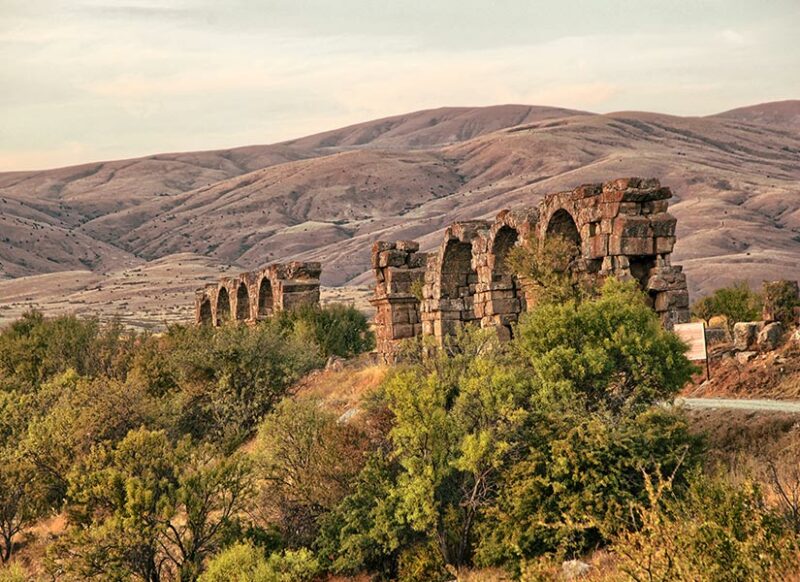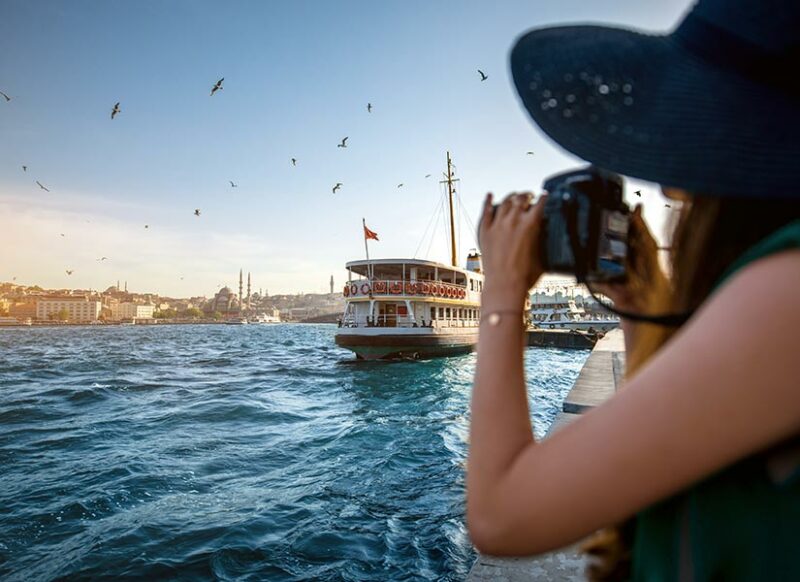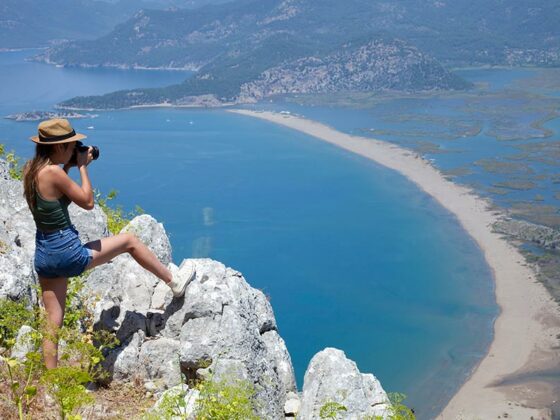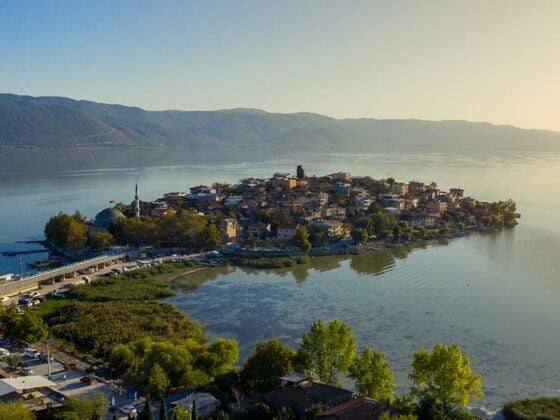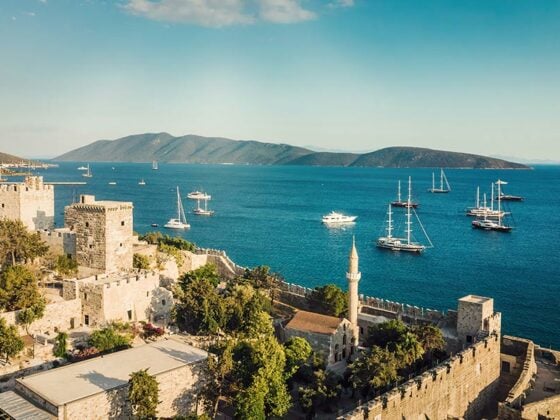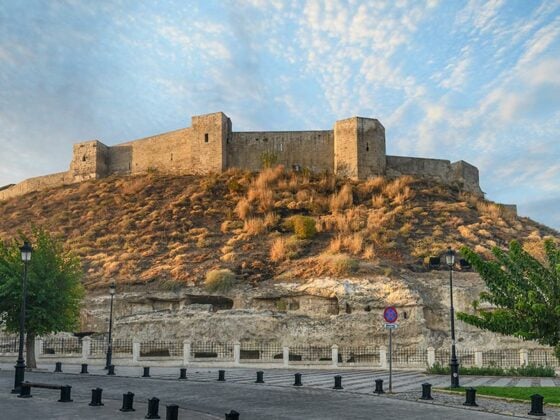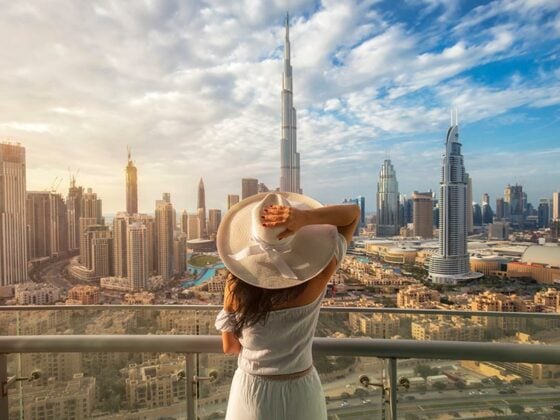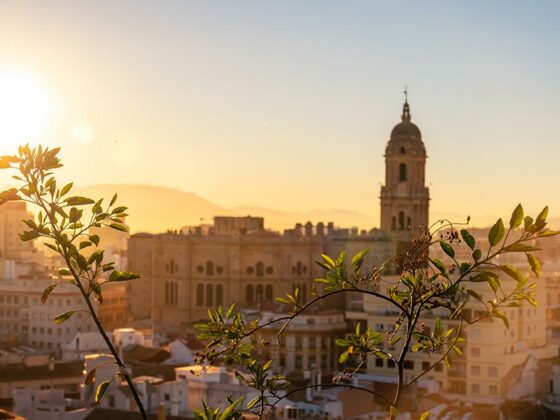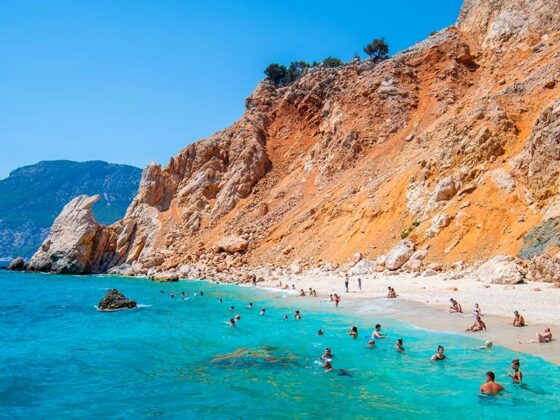The concept of “Cittaslow”, which Turkey launched in-country with the declaration that Cittaslow accreditation had been awarded to the town of Seferihisar as Cittaslow, is a concept embodying “slow city”. According to the 72 criteria determined by the international union of municipalities established in Italy in 1999, there are currently 282 Cittaslow urban centres from 32 countries in the world, 21 of which are located in Turkey. Seferihisar, which was declared a quiet city in 2009, holds the honour of being the first municipality accorded Cittaslow designation in Turkey.
Cittaslow: What is a “Slow Town”?
Inspired by the Slow Food Movement, Cittaslow communities strive to convene sustainable nature and cultural assets: applying the concepts of eco-gastronomy at practice of everyday life. The preservation of a city’s originality, retaining its own history, nature, culture and traditions in today’s fast-paced world, is of paramount importance to the members of this international association.
In order for a locality to be considered for the Cittaslow designation, it must meet 72 criteria in different categories. In addition, various projects in the city need to be developed and implemented for membership. As of 2022, there are 21 quiet cities from one end of Turkey to the other that meet these criteria, all notable for their particularities in culture, flora, fauna and history. They’re: Ahlat, Akyaka, Arapgir, Eğirdir, Foça, Gökçeada, Gerze, Göynük, Güdül, Halfeti, İznik, Kemaliye, Köyceğiz, Mudurnu, Perşembe Seferihisar, Şavşat, Uzundere, Vize, Yalvaç and Yenipazar.
Ahlat (Bitlis)
Located near Lake Van, Ahlat’s history goes back centuries, and the city is on the UNESCO World Cultural Heritage “Tentative List of State Parties”. Ahlat, located on the historical Silk Road, served as a border principality during the Assyrian period. The Urartians, one of the Anatolian civilizations, named the city “Halads” for the first time. The city, which is called “Şeleat” in Armenian, “Kelath” in Syriac and “Hil’at” in Arabic, was known as Ahlat in the Urartian language, an appellation which is still in use today. In the city, which is famous for its domes, the Ulu Tomb (Ulu Kümbet) and the Bayındır Tomb (Bayındır Kümbeti) are the most well-known monuments. Urartu Inner Castle, Sahil Castle, Seljuk Cemetery, Nazik Lake, Sutey Plateau, Bayındır Bridge, Nemrut Crater Lake, and Bird Paradise are some of the places you can visit in Ahlat.
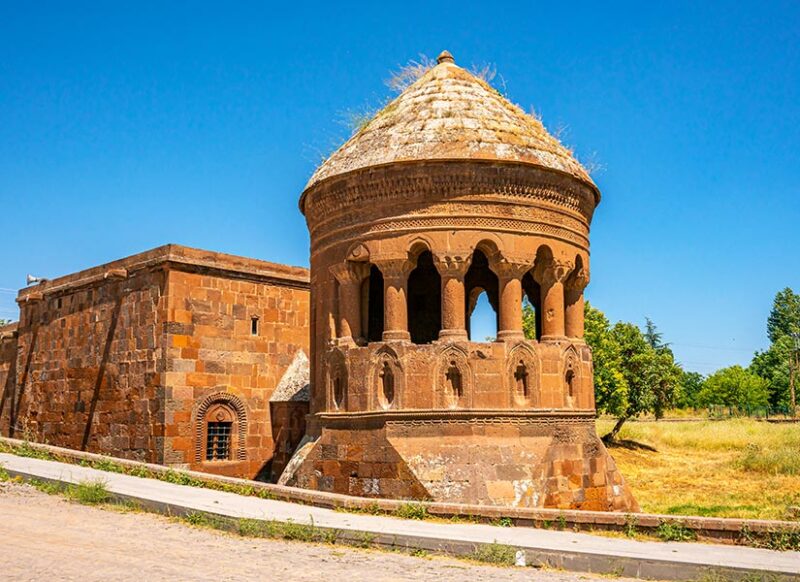
Akyaka (Muğla)
Akyaka, whose name we started to associate with tourism due to the growing popularity of Azmak Stream and Sedir Island, was a small fishing village until recently. The Akyaka settlement, where fishing continues as the main source of livelihood today, dates to ancient times. Akyaka is a destination where you can take a crack at many sports as an amateur, or as a professional. In the region, you can opt for activities such as paragliding, rafting, sea kayaking, sailing, kite surfing, rock climbing. For those of a less athletic bent, thanks to the special climatic conditions in the Gökova region, you can go bird watching, or Mediterranean monk seal viewing, in the sea in Akyaka, which is rich in biodiversity. Akyaka houses are known for their unique architecture and more often than not are draped with bougainvillea. For a quiet sea holiday intertwined with lush nature, you can find more of what you are looking for in Akyaka hotels.
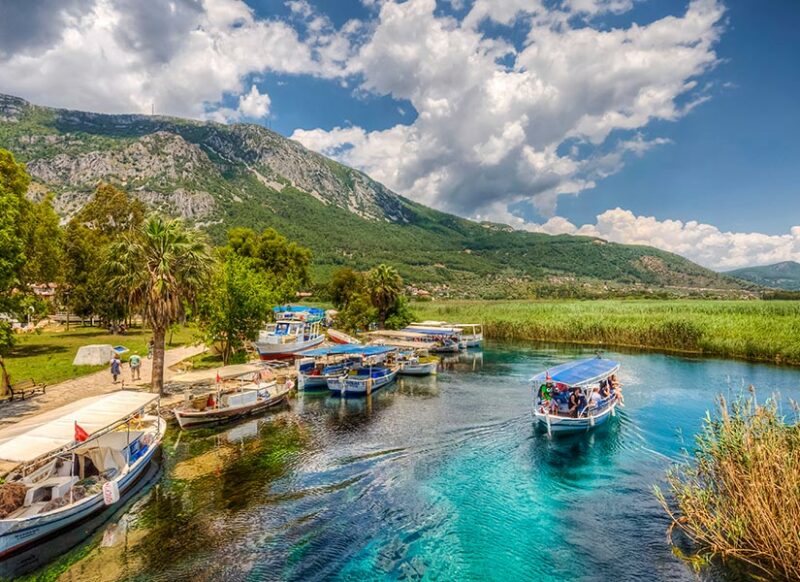
Arapgir (Malatya)
Arapgir, located in a rugged and mountainous region, has always attracted attention for its Kayaarası Canyon and Kozluk region. The mountainous areas around the valley are a frequented destination where sports such as rock climbing and canyon crossing both are open to professionals and amateurs alike. Arapgir has been a very important trade center since the Hittites, thanks to its trade routes. The practice of many handicrafts still continues in Arapgir, make sure you leave enough time to visit any or all of the following: The Historical Stone Bridge, Hastek Village Rock Tombs and Habitat, Konducak Palace Hamlet, King Rock and Church Ruins, Onar Village Roman Legion.
Eğirdir (Isparta)
Eğirdir, where today we highlight with Lake Eğirdir, known locally as the Seven Colour Lake, where you can see a different colour every hour of the day, is a place enmeshed with nature. Flora native to the area include the Kasnak oak forests (Quercus Volcanica), unique Turkish sweetgum forests (Liquidambar orientalis) and fauna includes the Apollo Butterfly (Parnassius apollo), an endemic species. Make sure to visit Green Island, Prostanna Ancient City, Kovada Lake National Park, while vacationing in Eğirdir. Sports such as water skiing, diving and sailing are also practiced in the lake where you can also while away the day with a fishing pole in your hand. You can also participate in activities such as a triathlon or tease your brain with bridge tournaments in the district, which is very active during the summer months.
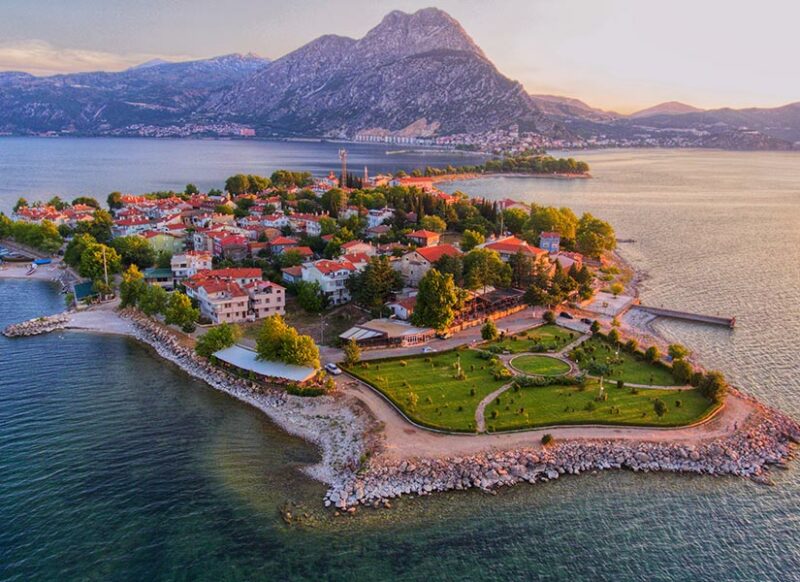
Foça (İzmir)
Phokaia or Foça, named after the seals living on its islands, is an ancient Ionian city. Foça, which established many colonies in the past thanks to its advanced technology in shipbuilding, was the lifeblood of the regional trade. Today, it continues to fascinate visitors old and new with all its historical background and magnificent sea. While you are in Foça, you should definitely observe the seal colony on Orak Island;), İncir Island, the cactus fields of Fener Island, Haysız Island, Kartdere Island and Metelik Island. You can swim peacefully on the Blue Flag Foça beaches and even explore the unique underwater world by diving. Kupez (bogue fish, or more commonly, sea bream) with yoghurt, broad bean dishes, adabeyi fish soup, çekme (homemade pulled, or cut pasta), lamb meat, a salad of young şevket-i bostan (golden thistle), kakavya (a kind of fish stew named after the pot it is simmered in) and Foça ice cream are local delicacies that you should definitely taste.
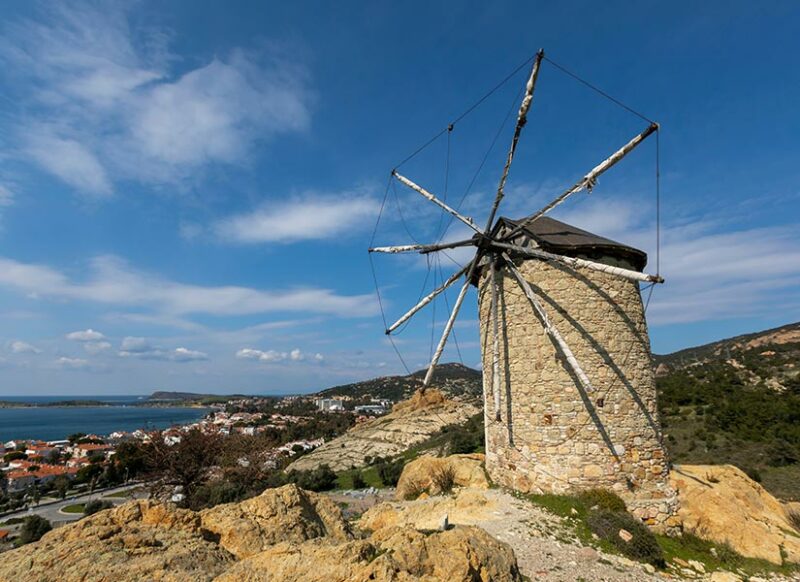
Gökçeada (Çanakkale)
Located in the westernmost part of Turkey, Gökçeada is the only island among the world’s Cittaslows. The island, which is a part of Çanakkale province, attracts attention with its stone houses, natural life, local flavours and alternative sports facilities. The Gökçeada hotels are all equally attractive and welcoming, and a great base to go visit the historical Greek villages, Yeni Bademli Mound, Salt Lake, Marmaros Waterfall and the bays of the island. Lamb poaching and lamb stew are among the most recommended dishes of the island. Mastic gum pudding, efibadem (melt-in-your-mouth almond cookies), cicirya (cheese pizza typical of Gökçeada) and dibek coffee (Turkish coffee ground with stones) are ready to enliven the palate with tastes unique to the island. Buying olive oil while preparing to return home should also be in the back of your mind.
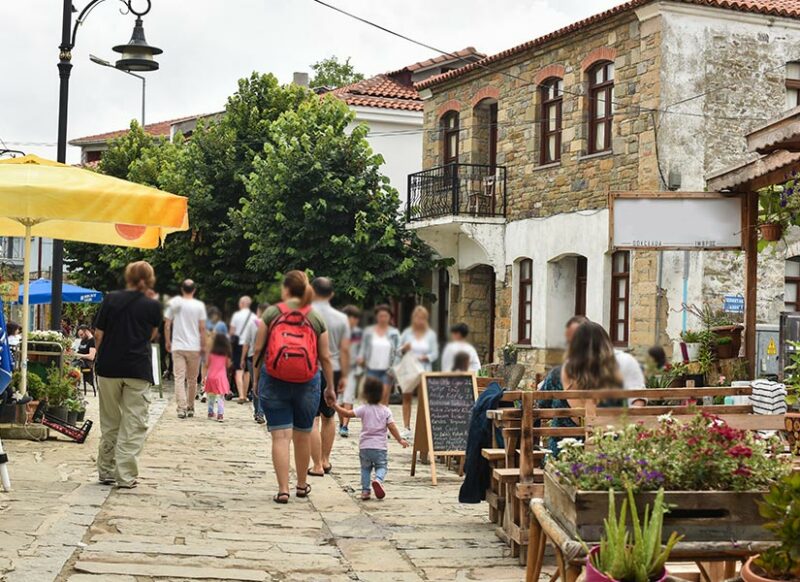
Gerze (Sinop)
Gerze, the quiet town in Sinop, Turkey’s northernmost city, offers an atmosphere where the deep blue sea embraces the verdant land. The region, which is suitable for hiking and paragliding, enlivens the palate with its local dishes. There are local delicacies such as boranaşı (a kind of dumpling), şipsi (a dish of Circassian ancestry), çakaduzu, tirit (a concotion which reuses dry bread), nokul (a kind of donut), zıbıdık (early flowering borage), and salted fish that you can taste only here. After making a reservation for Gerze hotels within walking distance to the sea, do plan to visit both natural formations and historical places such as Yelken Hill (Yelken Tepe), Sorkun Waterfall, Derecuma Mosque, Yakupağa Mansion, Taşhan, Sökü Plateau, Değirmenli Waterfall, Köşk Mound, Lighthouse.
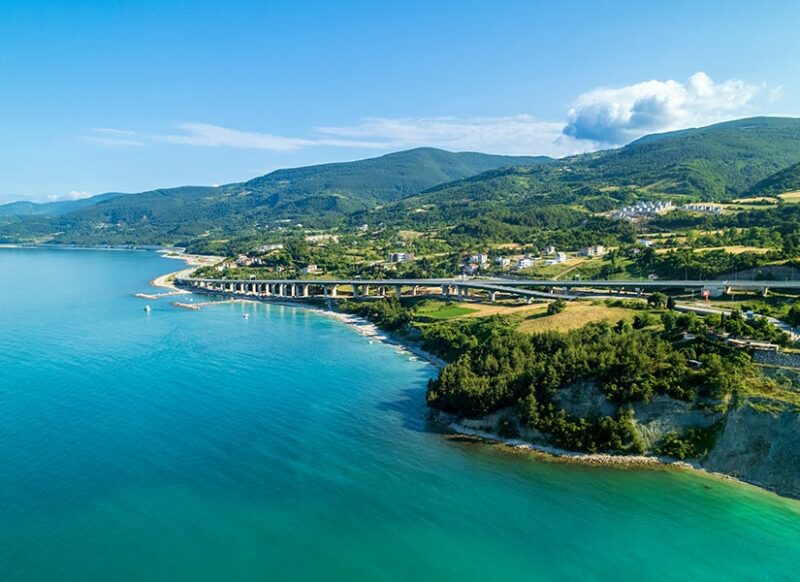
Göynük (Bolu)
Founded as a typical Ottoman town in Bolu, one of Turkey’s green cities, Göynük developed thanks to the saffron trade and has been an important centre throughout history. Many centuries ago, landslides dammed in both the magnificent Sünnet and Çubuk lakes. This vista, complete with surrounding windmills, will remind the photographers in your travelling party of a film set as glorious as the Alps. While you are in Göynük, you can visit the Victory Tower (Zafer Kulesi) on the hill where the victory was heralded in the Battle of Sakarya; or the Tomb of Hoca Akşemseddin, one of the teachers of Fatih Sultan Mehmet. Debbağ Dede Tomb, Gazi Süleyman Paşa Mosque and Hamam and Şarlıhan Waterfall and Canyon are among the places you should see in Göynük.
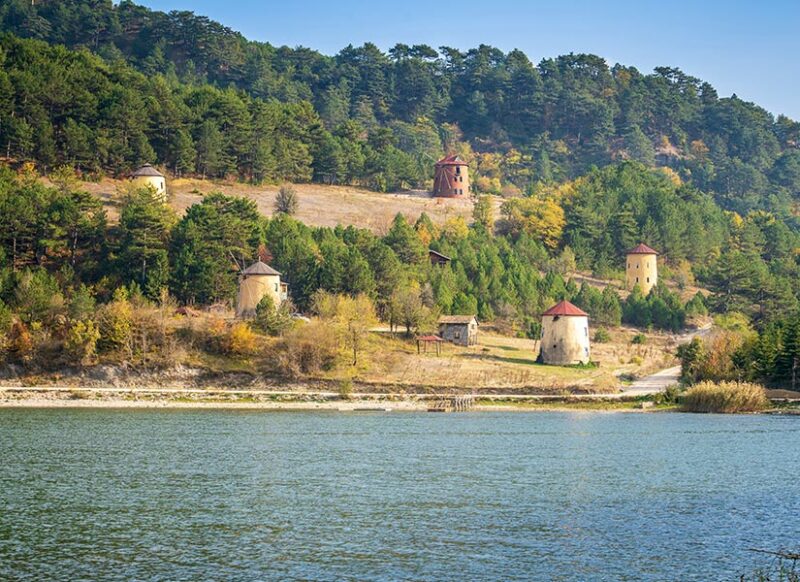
Güdül (Ankara)
Güdül, one of the smallest rural towns in the Ankara district, is the capital of peace, where you can enjoy its nature, architecture, culture, history, calm and charm. If you choose to visit the Güdül City Museum, the Salihler Rock Inscriptions and Güdül Houses, you can discover the history and culture of this charming town located in Ankara. Sorgun Pond, İnönü Caves and Yeşilöz Kirmir Valley will satisfy your soul with their natural beauty. Don’t forget to taste the local delicacies unique to Güldül, such as kapama (cinnamon stewed chicken), keyman (fenugreek) and şibit (a delicious, sweet and crispy dessert).
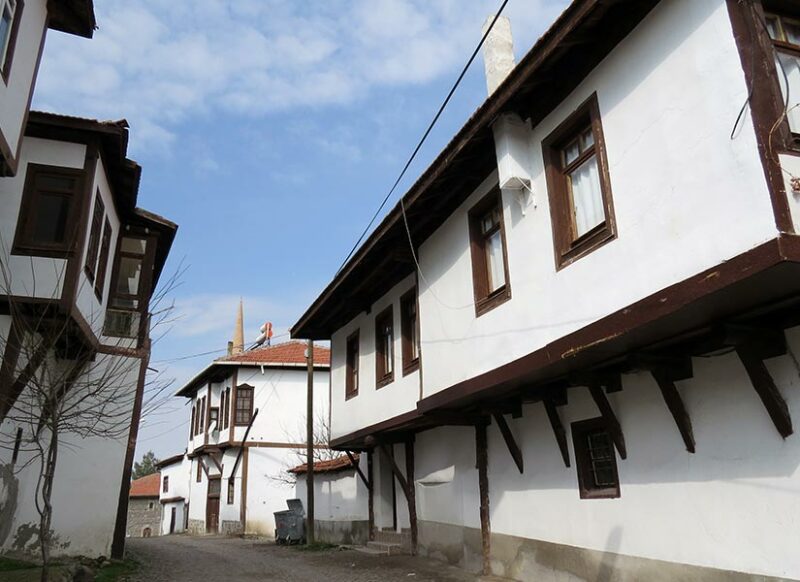
Halfeti (Şanlıurfa)
Halfeti, famous for its black roses, unseen anywhere else in the world, has been referred as the hidden paradise of Şanlıurfa in recent years. On the Euphrates River, you can visit Çekem Neighborhood, Beresül (Savaşan) Village, Rumkale, St. Nersess Church, Barşavma Monastery and water cisterns — all by boat. Here you can explore flooded houses, trees, mosques, caves, and tea gardens. In the unique canyons of Halfeti, you can go hiking or discover endemic plants and insects on a mountain bike tour. Shabout fish kebab, eggplant kebab, tomato kebab, onion kebab, çağırtlak kebab (liver kebab), dolma eziği (zucchini dish), erik tavası (baked plum), fig kebab, rice with mukaşşer (rice with black chickpeas), tarhana soup, sargı burma dessert (a kind of baklava), rice pudding, cheese halva, semsek (pastry with cheese)… with local delicacies like these within your grasp, you’ll never want to leave. On the way back, do not forget to buy handmade pomegranate sour and isot (Urfa red peppers), as well as dried peppers, eggplants, zucchini, and okra.
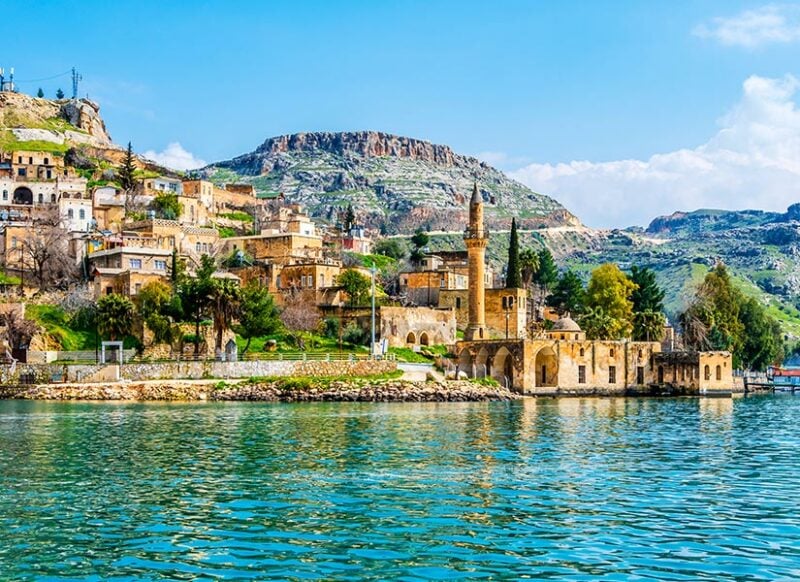
İznik (Bursa)
İznik, a quiet village near Bursa which could double as an open-air museum, is on the UNESCO World Heritage Tentative List for its history and nature. İznik, which was the capital of the Eastern Roman Empire, Seljuks and Ottoman Empire, is also an important site for worship or reflection for observant Christians. Formerly known as Nicaea, İznik was the site for The first and the seventh “Ecumenical Councils” were held here, and the 20-item text known as the “Nicaea Laws” or “İznik Council”, which is considered sacred for Christians, was approved at the Senatus Palace. Lake İznik is very interesting for water sports lovers. For lovers of decorative handicraft, the unique İznik tiles, whose colourful and delicate illustrations resemble lace embroidery, continue to fascinate those who see them. There are many important mosques, tombs and madrasahs from the Ottoman period in İznik. By choosing among the hotels in İznik, you can explore the historical structures in the vicinity in a large amount of time. Süleymanpaşa Madrasa, Sarı Saltuk Tomb, İznik Museum, St. Tryphonos Church, İznik Church, Obelisk, Green Mosque are the places you must see in İznik.
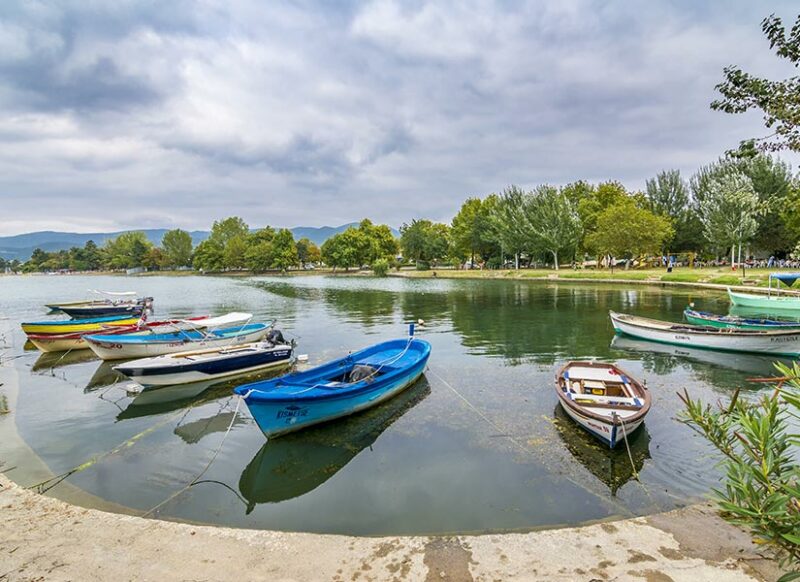
Kemaliye (Erzincan)
The district, formerly known as Eğin, took the name of Kemaliye due to its support to Kuvay-i Milliye (the National Forces) during the War of Independence. Located on the historical Silk Road, Kemaliye hosts the most beautiful examples of Anatolian cultural heritage and is included on the UNESCO World Heritage Temporary list. The Dark Canyon (Karanlık Kanyon), which is the second largest canyon in the world after the Grand Canyon, is one of the destinations which cannot be missed. The canyon, which allows many outdoor sports, draws attention from the world over. Destinations of note in sunset view from Şahin Hill, Ala Cave, Kadıgölü, Hıdır Abdal Tomb, Kemaliye Mosque, Enver Gökçe Museum, Hıdır Sultan Abdal Quarry, Munzur Creek and the headwaters of the mighty Euphrates River.
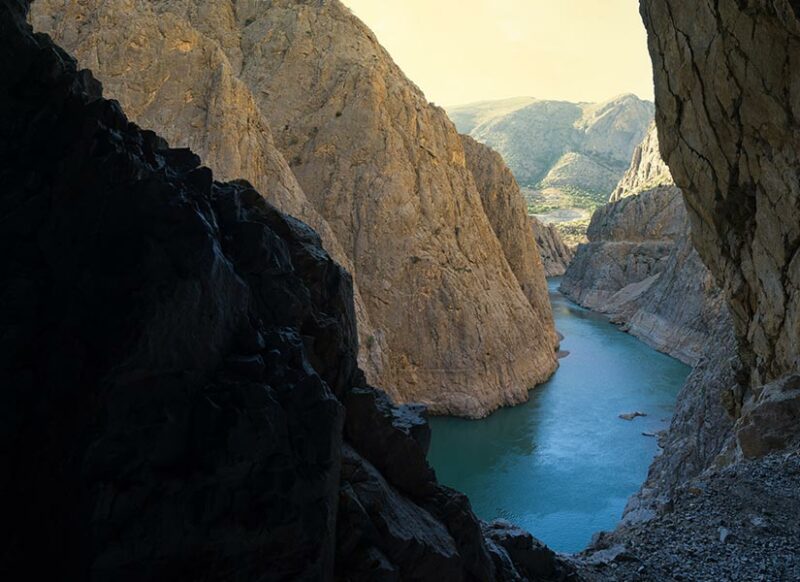
Köyceğiz (Muğla)
Köyceğiz, hidden among citrus orchards and sweetgum forests in Muğla, is located on the shore of the lake from which it takes its name. The historical Köyceğiz, where the Aegean and Mediterranean regions meet and is hidden among many touristic centres, is very close to the ancient city of Kaunos and the İztuzu Beach, where turtles visit and lay their eggs in abundance. In the city, where there has been a settlement since 3400 BC, many historical and natural beauties are waiting for you, from the sweetgum forests to the Ancient Kaunos Lion. While Köyceğiz, Sandras Mountain, Yuvarlak Çay, Topgözü Canyon welcome you with all their natural beauty, Asuhdede Tomb, Seyhler Tomb, Çiçek Baba Tomb and Kaunos Ancient City reveal the history of the region. In Köyceğiz, which is known for its herb-based cuisine, you can sample dishes made with hibiscus, poppy, rhubarb, gazyak (goosefoot), Swiss-cheese Plant (Monstera deliciosa), wild leek, common glasswort, wild mustard, generally cooked and served with yoghurt. In addition, mushroom varieties are also very delicious in the region, pumpkin dishes, fish stew, carp stew, çıntarlı saç böreği (pastry with saffron milk cap mushroom) or pumpkin pastry are among the local delicacies of the region. Don’t forget to buy olive oil on your way back after staying in Köyceğiz hotels.
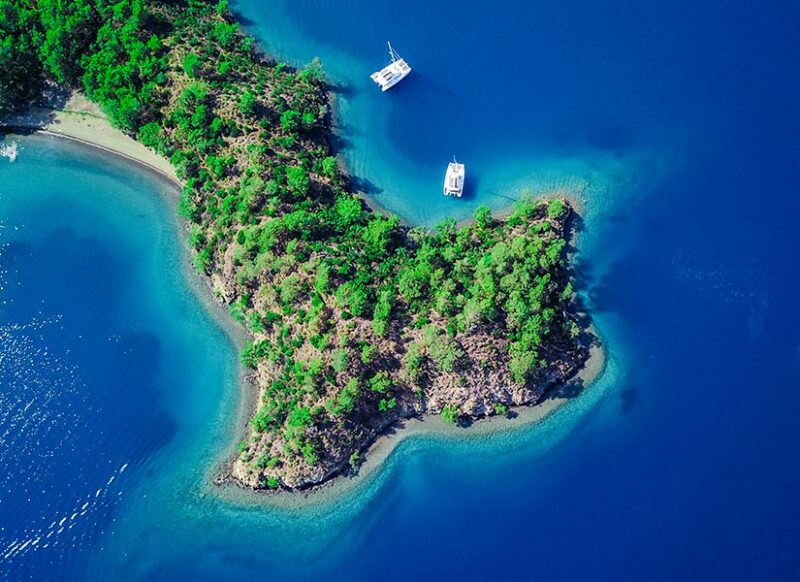
Mudurnu (Bolu)
Mudurnu, one of the districts of Bolu Province in north-western Turkey, opens a window to breathe into nature. In the district, where the main source of income is animal husbandry, craftsmen who carry the old handicrafts to the present day are still to be found. Historical sites such as Yıldırım Beyazıt Mosque, Kanuni Sultan Süleyman Mosque, Samsa Mosque, Clock Tower, Mudurnu houses and Armutçular Mansion are waiting to be discovered. Bolu hotels are ready to welcome you to discover both Mudurnu and the beauties around Bolu Province. Due to its central location, Mudurnu offers the opportunity to visit Abant Lake, Sülüklü Lake, Karamurat Lake, Sarot and Babas Hot Springs. While staying in Mudurnu, you can taste the local delicacies that will tickle your palaate such as saraylı tatlısı (dessert), Mudurnu Saray Helvası (Mudurnu palace halva), oğmaç soup, uhut soup, meat dishes, pickles and especially tart and delicious cranberry sherbet called karaova.
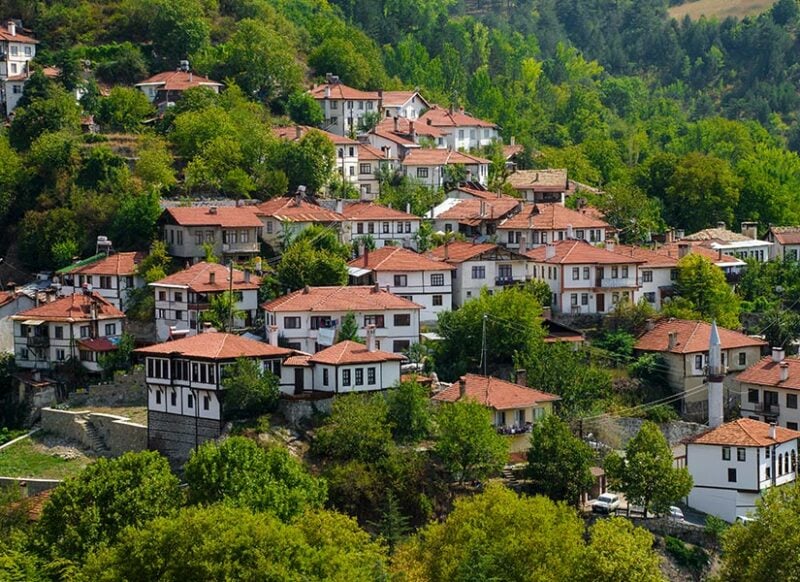
Perşembe (Ordu)
Perşembe district, formerly known as Vona, is surrounded by Cape Yason from the north and Pine Cape from the south. Located in Ordu, Perşembe Town is a charming location on the Black Sea coast, where every shade of green is visible to the onlooker. A natural port city where you can choose to stay in rustic bungalows or sleek hotels, you can explore the historical structures left by the Genoese. Oçboynuzu (King) road, Medreseönü Afırlı Mosque, Yason Burnu (Cape Jason), Cape Çam, Hoynat island, Yason Feneri (Jason Lighthouse), Çaka Beach, Efirli Beach, Çeşmeönü, Şenyurt Waterfall, Kışlaönü are among the places you should definitely visit in Perşembe. If you want to add flavour to your holiday, you should try local delicacies such as anchovy rice, Melocan (Greenberries) roast, corn bread, beet (kale) soup, anchovy steamed, corn soup, sakarca kayganası (crocus omelette), beet wrap with corn, galdirik (early flowering borage) roast in Perşembe, where you can find a variety of roasted pickles.
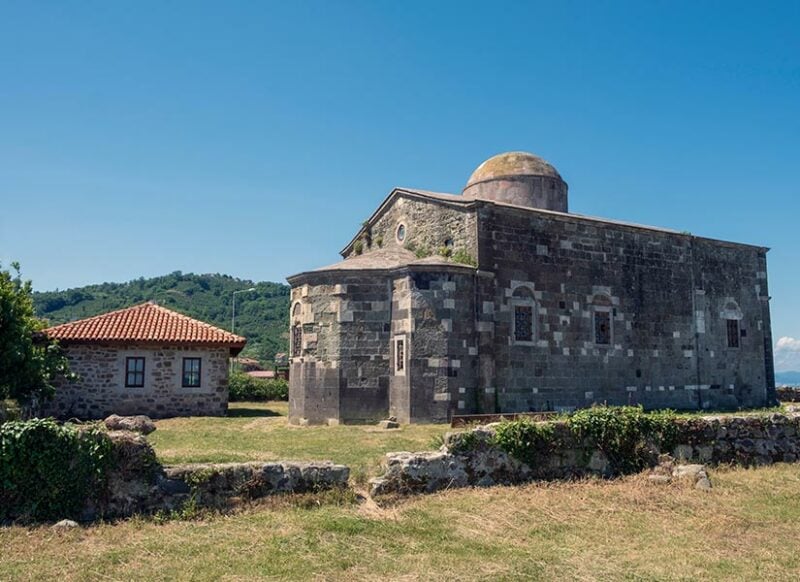
Şavşat (Artvin)
Fascinating with its lush nature, Şavşat is connected to Artvin in the north-western tip of Turkey. It is possible to see many structures from the Middle Ages and Ottoman periods in Şavşat, where the settlement dates to ancient times. While staying in Şavşat hotels, which offer accommodation options interwoven with nature, do not forget to visit the Cevizli (Tibet) Monastery, Şavşat (Satlel) Castle, Veliköy Old Wooden Mosque, Karagöl, Meydancık Stone Arch Bridge, Tamara Rooms, Suatan Waterfall, Satlel Church and Cemetery and Yavuzköy (Seyir – Observation) terrace.
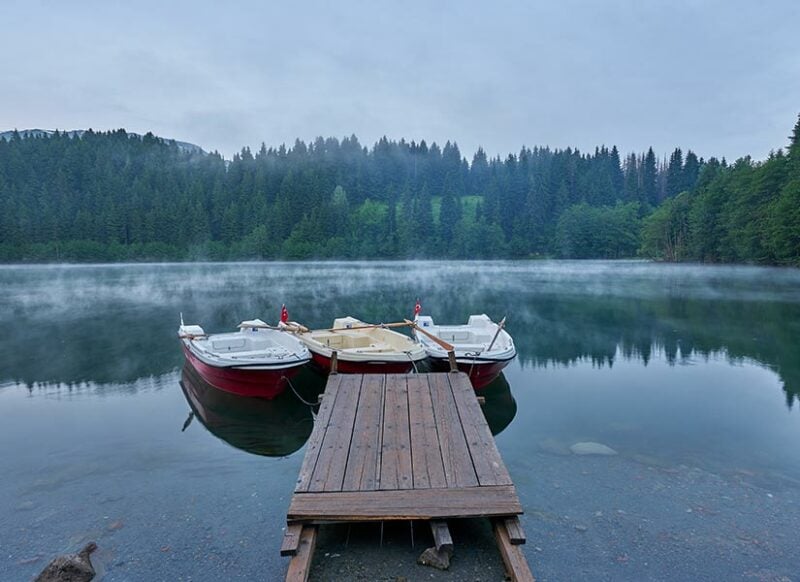
Seferihisar (İzmir)
Seferihisar is Turkey’s first quiet city. Founded by Cretans and Carians, the city has always drawn attention with its tangerines and its historical heritage, and in present time its reputation for concentration on renewable energy sources has added to its prominence. Sığacık Castle, Teos Ancient City, Lebedos Ancient City, Beyler Village Aqueducts are the places you must see. In Seferihisar, whose villages are worth seeing, festivals are held throughout the year in many fields, especially in agriculture. When you come to Seferihisar, don’t forget to visit the lavender fields and shop at the “Women’s market”. You should definitely taste local dishes such as stuffed bread, yuvalaça (meat balls), stuffed artichokes, ravioli with chickpeas, and traditional armola (cheese), followed by sweets such as oklavadan sıyırmam samsades, tangerine dessert and sweetened tarhana. Sığacık hotels to discover the authentic atmosphere of Seferihisar, and Seferihisar hotels to be closer to the nature offer options just for you.
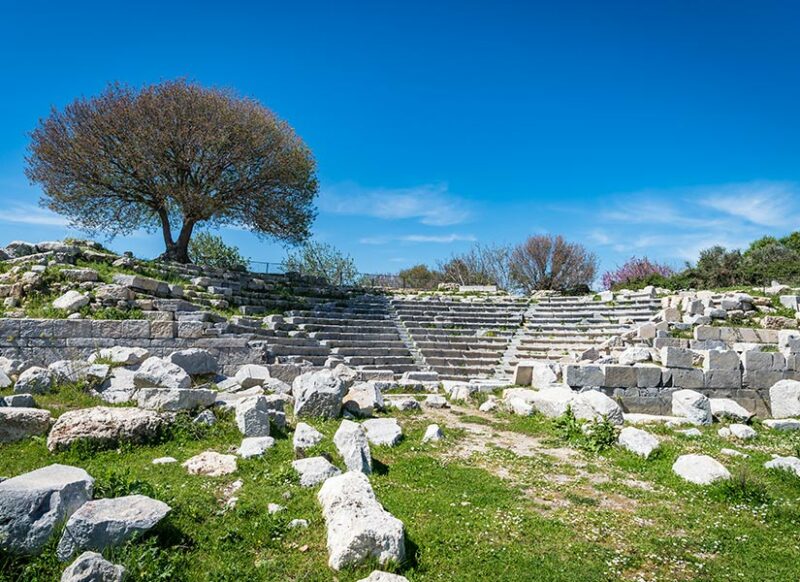
Uzundere (Erzurum)
Turkey’s longest cascade, Tortum Waterfall is located in the district of Uzundere, Erzurum. Uzundere is a very convenient place for water sports such as sailing, rafting, and canoeing, as well as being an ideal spot for camping in nature. Uzundere is located at the western end of the Caucasian Ecological Region, which has the richest biodiversity in the world. You can go bird watching in Uzundere, which is home to many endemic species of plants, mammals, birds, and butterflies. Tortum Waterfall, Yedigöller, Öşk Monastery, Engüzek Castle, Sapanca Castle, İnçer Mosque are the places you must see in Uzundere. In Uzundere, which is famous for its cag kebab, do not overlook local delicacies such as yufka yağlaması, katmer (crisp flaky pastry), kaleçaş (soup), stuffed prunes, siron, tirit with roasted meat, tava pağacı (flaky pastry), kaygana (omelette) with dried fruit rolls, fish stew, ayran soup, walnut noodles. You can take your favourite delicacies, uncooked, on your way back home.
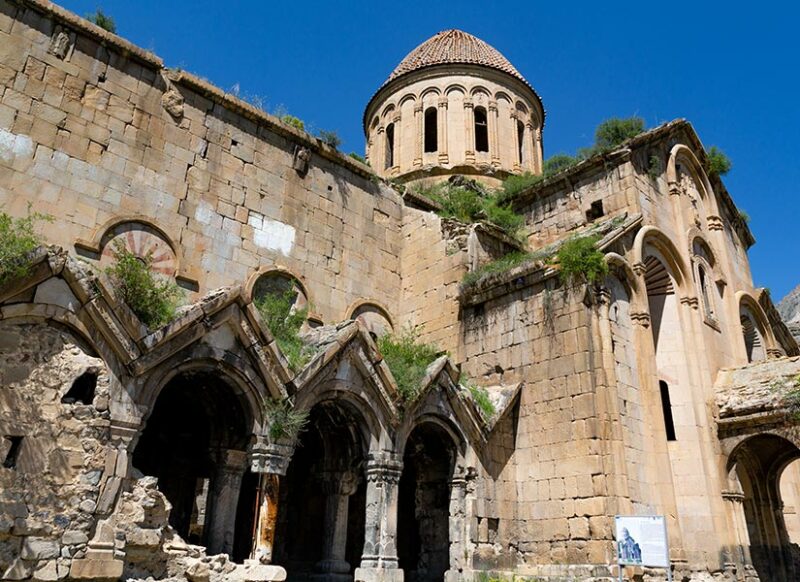
Vize (Kırklareli)
Vize, a hidden paradise between the two former Ottoman capitals Edirne and İstanbul, is a small district of Kırklareli. Vize, has a very rich history, offering a look back into the past with the opportunity to visit Gazi Süleyman Paşa Mosque (Little Hagia Sophia), Şerbetdar Hasan Bey Mosque, Vize Castle and Walls, Antique Theatre, Ferhat Bey Bath, Ferhat Bey Fountain, Karakoçak Hill and the Asmakayalar Cave Monastery. You can go on a small nature discovery with day trips to Çiftekaynaklar, Cehennem Waterfalls, Kıyıköy, Yenesu Cave. Goat shawarma, trout with mushrooms on tile, nettle soup, linden flower honey and soft, creamy Vize cheese are among the local delicacies to savour.
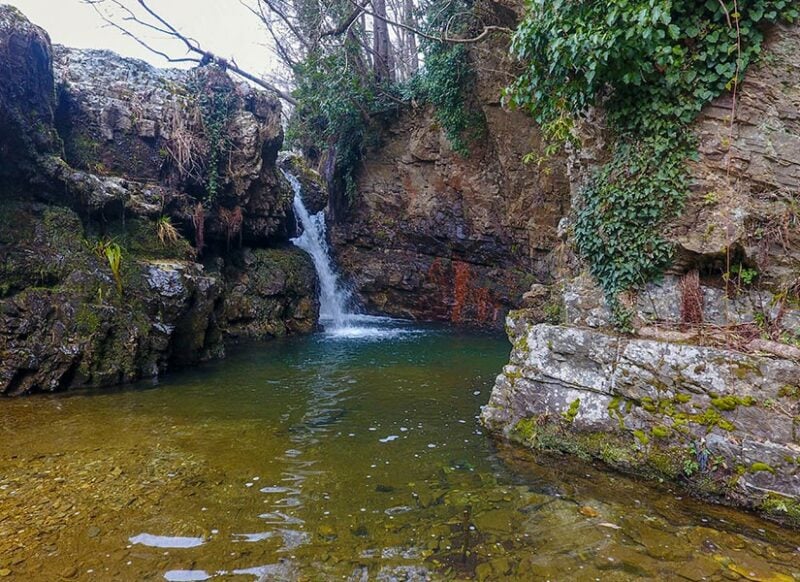
Yalvaç (Isparta)
Yalvaç, a quiet city built at the foot of Sultan Mountain, is attached to Isparta Province. There are many ruins from the pre-Roman Hellenistic period in Yalvaç, which lived its heyday during the rule of the Roman Empire. In the district, where trade was carried out intensively in the past, the tradition of valuable handicraft continues. Pisidia Antiokheia Ancient City, Moon God Men Sanctuary, Çınaraltı, Devlethan Mosque, Hoyran Lake, Traşzade Mansion, Rock Tombs, Ottoman Bath, Yalvaç Museum are among don’t-miss attractions available to day-trippers and long-stayers alike.
